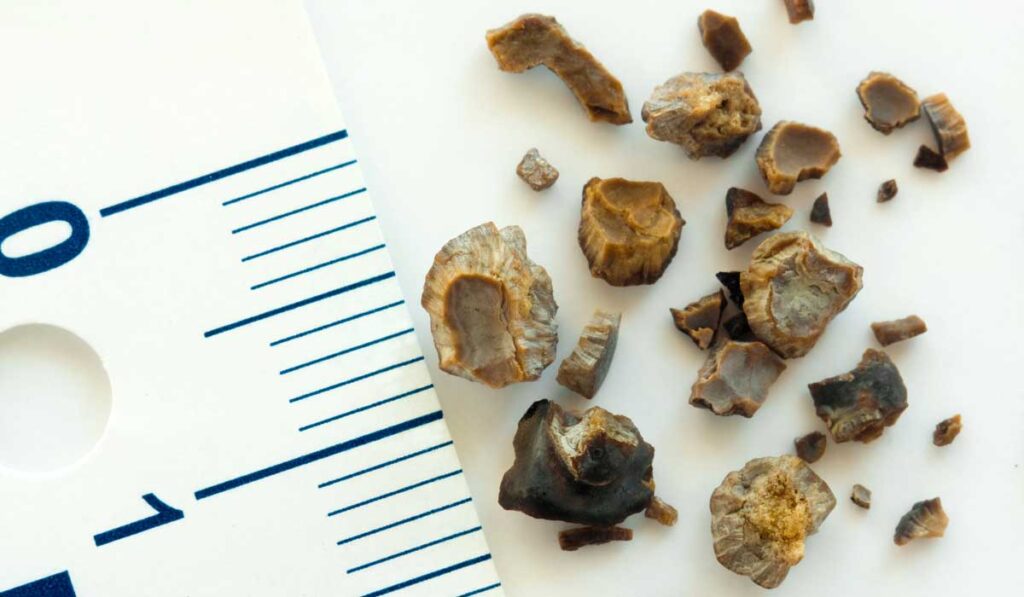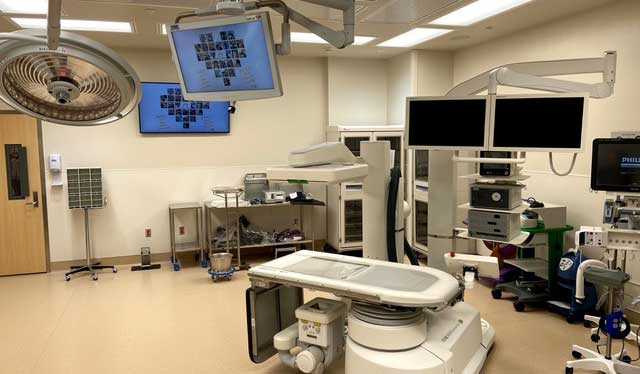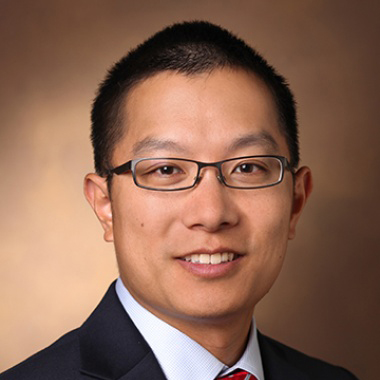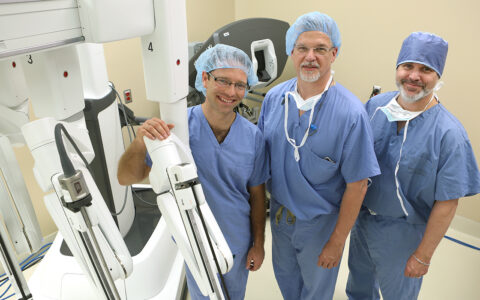Every kidney stone patient wants rapid relief from the pain and to avoid future stones, but patients differ in how much down-time are willing to tolerate to ensure the stone is completely cleared.
At the Vanderbilt Stone Center, treatment plans allow rapid provision of care, reflect personal preferences, and emphasize prevention of future stones, says Ryan Hsi, M.D., an associate professor of urology at Vanderbilt University Medical Center.
The center brings together expert clinicians and the needed support staff in a facility that has the most up-to-date equipment available to provide patients with treatment within 48 hours, Hsi explains.
“But the point is not just to take care of a stone when the patient has symptoms; it’s also about figuring out why they are making those stones and coming up with a personalized plan to prevent them.”
The center is the first to provide comprehensive care for adult patients in Middle Tennessee, and it also supports kidney stone research. Children in need of care for kidney stones are treated at nearby Monroe Carell Jr. Children’s Hospital at Vanderbilt.
“Prior to establishing the center, we had to reserve a lithotripter from mobile lithotripter services owned by third parties,” he said. “That’s the usual approach.”
Booking those machines, either immediately or on short notice, was not a sure thing, and patients often had to wait. The center now also has the capability to do outpatient standard and mini percutaneous nephrolithotomy procedures for larger stones.
Constellation of Components
“When we set out to improve kidney stone care in the region, we realized you can’t just do one thing … hire more people, build more clinic rooms, or add new equipment,” Hsi said.
All those things had to happen simultaneously because they rely on each other, he said.
“But the point is not just to take care of a stone when the patient has symptoms; it’s also about figuring out why they are making those stones and coming up with a personalized plan to prevent them.”
The center is close to an interstate highway, which improves access to care and offers ample space in its procedure rooms, clinic spaces, and operating rooms, as well as the latest equipment and a human resources specialist.
“We hired only fellowship-trained clinicians or those who specifically focus on kidney stones,” Hsi said.
Hsi’s team also hired a patient care coordinator, increased outreach to primary-care doctors in the region, and established a toll-free number for new patients, allowing patients to schedule same-day or next-day appointments.
Specialty Equipment at the Center
The Vanderbilt Stone Center also has an advanced multifunction urological workstation, the MODULITH SLX-F2 connect, one of only a few centers housing this specialized technology.
“It combines everything needed to diagnose and treat stones – including an excellent lithotripter with a table and state-of-the-art imaging equipment,” His said. “The table allows us to do shockwave lithotripsy, ureteroscopy and percutaneous nephrolithotomy.”
Hsi and his team also employ laser lithotripsy technology, including the Moses 2.0 holmium laser and thulium lasers, known as the most efficient, effective means of stone fragmentation.
“The benefit of these lasers is that they reduce treatment times and possibly improve stone-free rates,” he said.
Hsi and colleagues have published their results on enhanced recovery after surgery with multimodal medications. Overall, this means that each patient can have a customized, usually opioid-free, treatment plan for their unique situation.
“I see my job as saying to the patient, ‘Based on your history and imaging, this is what makes you different from other people, and these are your best options because of that.’”
Prevention is equally important for addressing kidney stones, Hsi said. The stone center performs metabolic evaluations that can lead to nutritional advice, medications and surveillance plans tailored for each patient.
For more complex cases, Hsi co-leads a joint urology–nephrology clinic with Edward Gould, M.D., an assistant professor in the Division of Nephrology and Hypertension at Vanderbilt Medical Center, offering shared visits and access to dieticians.
Personalized Treatment Plans
The center’s arsenal of treatment options means patients can choose what is best for them.
“Often, we collectively decide that observation and surveillance is the best option,” Hsi said. “Alternatively, one may want the fastest recovery with the least invasive shockwave lithography so they can get back to work the next day, even though that might mean a higher possibility of residual fragments. Another patient may choose a slightly more invasive approach, with ureteroscopy, because they want to have a better chance clearing all of the stone in one procedure, even if it means possibly having to have a ureteral stent in place for a few days.”
Patients can become overwhelmed by all the information they find online, on top of advice from friends and relatives, Hsi said. The center’s team help patients sort through it all.
“I see my job as saying to the patient, ‘Based on your history and imaging, this is what makes you different from other people, and these are your best options because of that.’”





